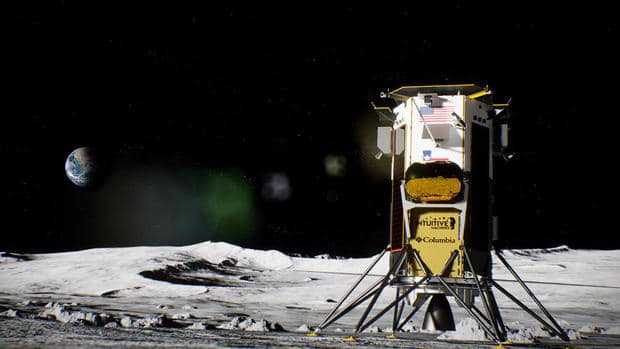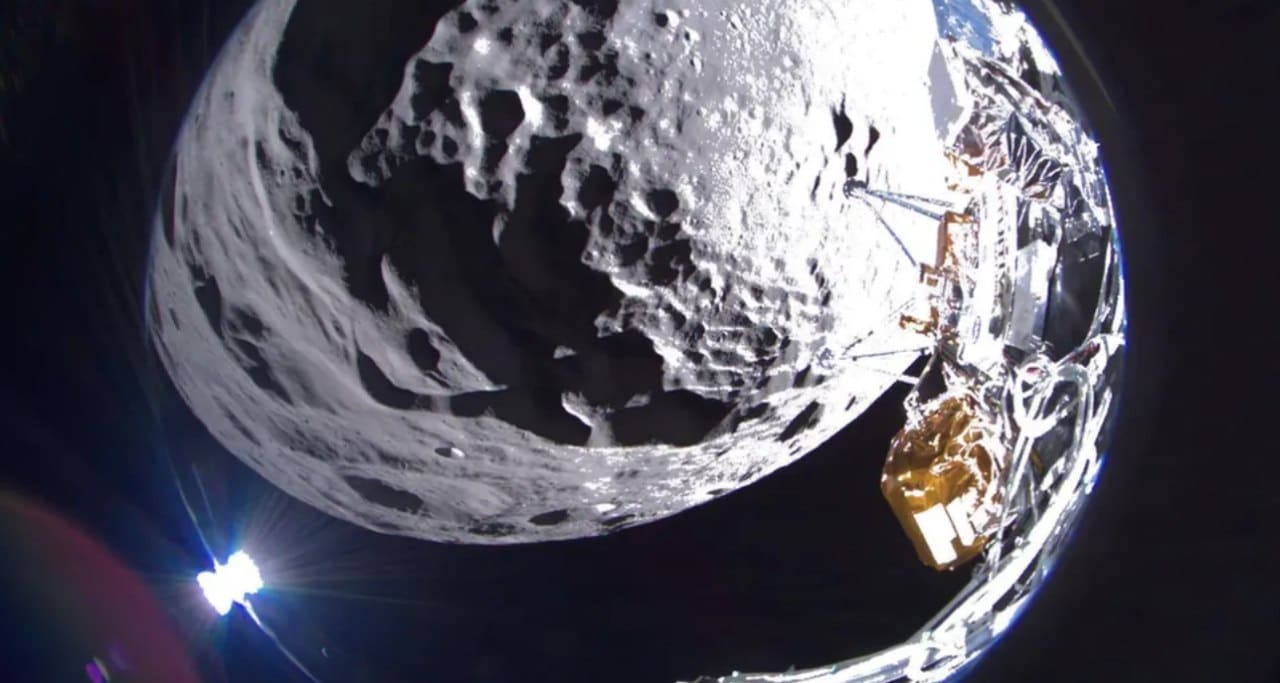The development company claims that, despite tipping over on its side, everything is fine with the device. However, she did not provide any pictures after the moon landing. This may indicate that due to the incorrect position of the device, it is seriously limited in its ability to send data to Earth.
As we have already written, on February 23, 2024 at 2.23 Moscow time, the Odyssey lander of the private American company Intuitive Machines achieved an automatic soft landing on the Moon. This was a historic achievement: before that, the United States managed to land automatically on Selena in 1968, and manually in 1972. It is difficult to land on a satellite of our planet: the first landing of people on the Moon did not end in tragedy only because the astronauts abandoned the automatically selected landing area, took control and landed slightly in another place.
In 2024, the Japanese SLIM lander showed that even in the 21st century, landing on the Moon retains significant risks even for those players who, in principle, turned out to be capable of it: it landed upside down. At the Intuitive Machines press conference, held on the night of February 24 in Moscow, representatives of the company admitted that they had a similar problem. Their Odyssey landed on its side.
How it turned out is unclear. Representatives of the company believe (but so far this is only a working hypothesis) that the reason was not fully extinguished lateral velocity of the lander. According to the original plan, it should have been zero, but in practice it was about 3.2 kilometers per hour, the speed of a slow-walking pedestrian. According to Intuitive Machines, this outstanding speed led to the overturning of the device.
At this stage, before receiving additional information from the device, which will take several days, it is difficult to rule out other options (although they are less likely). One of the landing legs could have given way or the landing site was chosen incorrectly. If there were stones on it, this could lead to one of the legs "sitting" on the stone and creating a tipping moment.
The unsuccessful choice of the lunar landing site could be due to the fact that Odyssey, unlike most moon landing vehicles, had a fully autonomous landing system, and did not carry it out under remote control. Computer vision, even in ideal conditions, is difficult to compete with a person's ability to identify objects (such as the same large stones), and Odyssey also had technical difficulties with a number of cameras and sensors before landing, which is why it used a non-basic set of them during landing.
 |
| This is how the Odyssey would look in the case of a regular landing on the Moon. |
| Source: Wikimedia Commons |
Theoretically, a third scenario is also possible: the moon was at 80 degrees south latitude, very close to the south pole. In this part of the moon, the surface is largely composed of permafrost. The combustion products of the fuel could partially "melt" such a surface, which also led to an uneven landing. However, the probability of this option is low: the Odyssey engines are relatively weak, it is difficult for them to provide such a scenario. At the same time, for more powerful engines — for example, as on Starship, which will take American astronauts to the Moon in the second half of the 2020s - such a scenario is more difficult to rule out.
Intuitive Machines claims that, despite the not quite successful landing, everything is fine with the device: solar panels receive energy from the Sun, scientific instruments look up, the antenna maintains communication with the Earth. But they have not yet provided any photos from the device after the moment of landing. This may indicate problems with the bandwidth of the communication channel due to the incorrect angle of the device.
Odyssey does not have a radioisotope heat source, so it is unlikely to survive the moonlit night, which will come in less than a decade. If the development company does not receive enough data from the landed device before this moment, the mission will be limited success. It is highly likely that future Intuitive Machines missions will be rescheduled to try to take into account the lessons of this landing.

